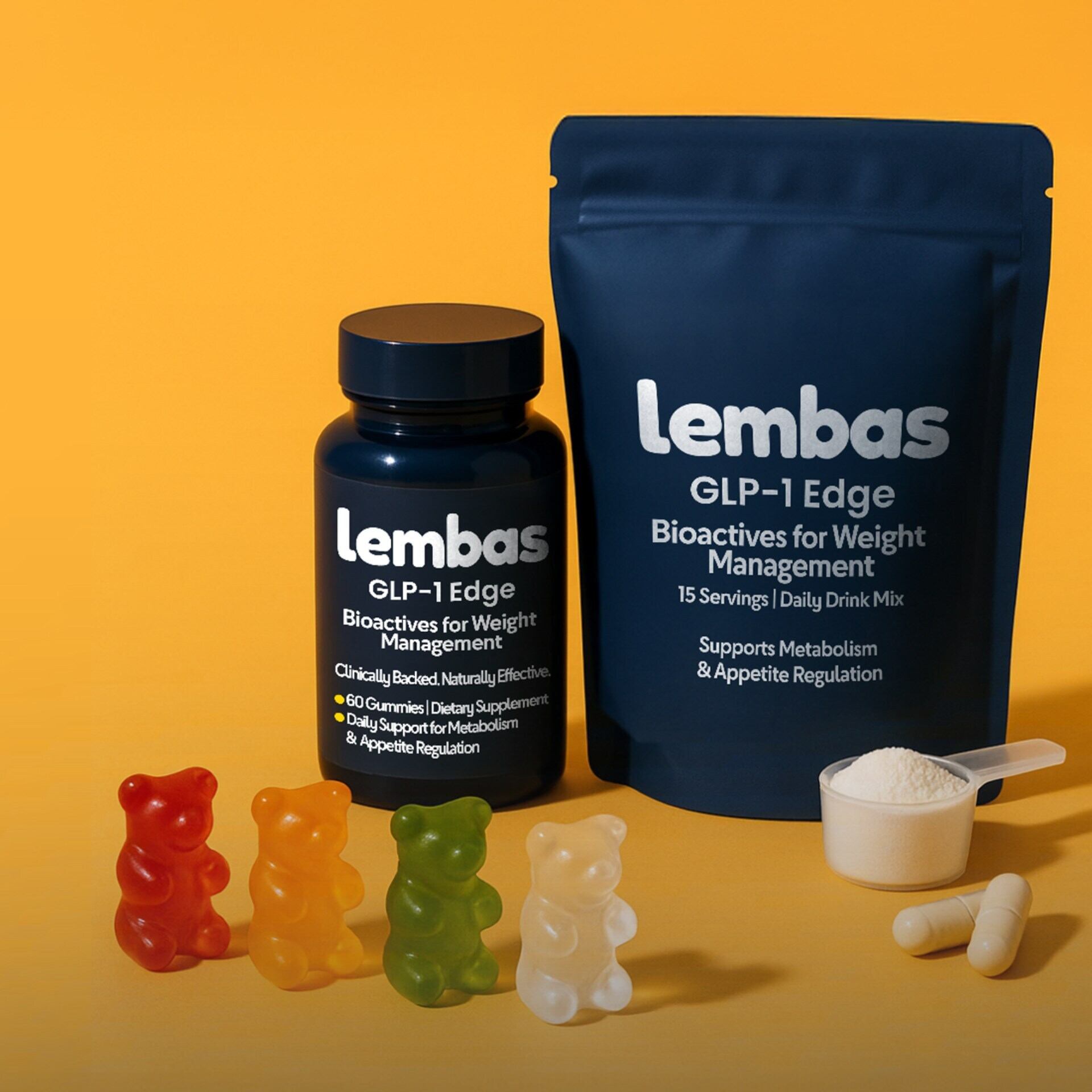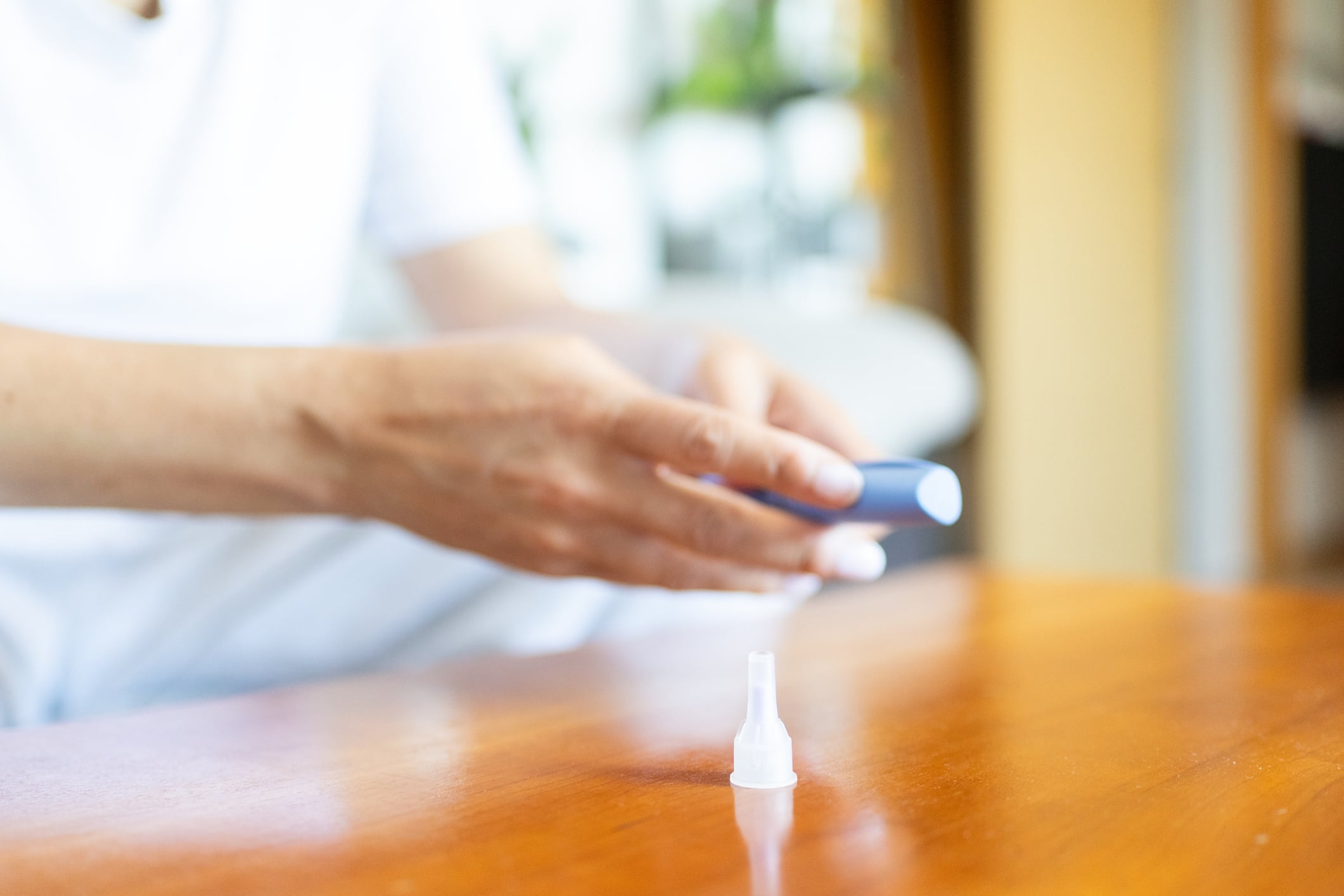GLP-1 drugs first came onto the market to treat type 2 diabetes, but more and more people are using them to lose weight.
For many, they’re working. But GLP-1s are not a panacea for all.
That’s because GLP-1 drugs are not as consumer-friendly as some other medications on the market. They require injections (needle phobia, anyone?), the drugs have known side-effects, and they’re also seriously expensive - bought privately, a month’s supply can range from around €150 to €350.
So what happens when people tire of injecting themselves, fear side effects, and amid a cost-of-living crisis, can’t afford the jabs?
Once the GLP-1 hype is over, could natural alternatives take the lead?
What is a natural alternative to GLP-1 drugs?
The market for GLP-1 drugs is gigantic. If we consider that around one in eight Americans have already tried a GLP-1 drug, according to healthy policy organisation KFF, and that more than two in five adults in the US live with obesity, there is real opportunity for pharma companies to meet this demand.
Those making the drugs, including Eli Lilly and Novo Nordisk, are amongst the top performing in the industry.
How do GLP-1 drugs work?
GLP-1 drugs, otherwise known as glucagon-like peptide-1 receptor agonists, work by mimicking the effects of a natural hormone called GLP-1. This hormone helps regulate blood sugar and slow down digestion, meaning users feel fuller (or satiated) and eat less.
But drugs aren’t the only way to activate the GLP-1 hormone. Natural food formulations can stimulate GLP-1, and a number are in development.
Lembas, an Israeli start-up recently out of stealth mode, is one such example. The company has achieved a “scientific breakthrough” in GLP-1 with “food-grade bioactives” that people can take in a variety of formats, from gummies to powders and capsules, or else it can be blended into bars, shakes or snacks.
Elsewhere, a novel ingredient made from pulses and legumes has also been developed to stimulate GLP-1 release. The minimally processed ingredient, coined PulseOn, can be used in food and drink formulations. “Not only can the intact cellular structure be obtained from a wide range of pulses and legume types, but it can also be incorporated into a wide range of foods,” says Alan Marson, company director of New Food Innovation, a consultancy working with PulseOn.
PulseOn flour can replace other varieties on the market, particularly in staples like bread, pasta and breakfast cereals, and Marson tells us it’s a “much healthier” carbohydrate for the snacks category.
Natural GLP-1 alternatives: Who’s the target market?
Globally, the GLP-1 receptor agonist market is projected to grow at a CAGR of 17.4% from 2025 to 2030, when it could reach an eye-watering value of €132bn (Grand View Research).
Some potential GLP-1 drug users, those using the medication for weight loss, could be drawn by natural alternatives. So what kind of consumer should makers of alt GLP-1 receptor agonists be targeting?
Lembas sees at least a couple of customer segments for its product. A natural alternative to GLP-1 drugs could suit people who need intervention, but have either experienced side effects or don’t have the means to access pricey drugs. “For them, our solution could serve as a supportive or alternative approach,” says Lembas CEO Shay Hilel.
A natural alternative could also suit people looking for food- or supplement-based solutions rather than pharmaceutical interventions. “These individuals are motivated to improve their health but prefer natural, non-drug options,” says Hilel.

For New Food Innovation’s Marson, both consumers and companies are on the lookout for GLP-1 alternatives, amid concerns about “unknown long-term side effects” and the “sustainability” of using such drugs at scale.
It is the right moment to launch an alternative, agrees Dr Cathrina Edwards, group leader at the UK’s Quadram Institute. Dr Edwards is also CTO for PulseOn Food Ingredients, the company bringing the technology to market.
Pharmaceuticals have raised public awareness of the role of hormones like GLP-1 in controlling blood sugar levels and body weight, she says. “It seems the perfect time to build on this to develop a narrative that helps consumers recognise the value of food-gut-brain connections, and how a healthy diet can support in-built hormone responses to have a tremendous positive impact on health.”
Tapering off GLP-1s: A new opportunity for industry
Another opportunity exists for the food industry, one that has never before existed.
When people decide to stop taking GLP-1 drugs, they’re often advised to taper off – in an effort to avoid any rapid weight regain. Once off the drugs, consumers will still have to watch what and how much they eat, in order to keep the weight off.
People who have come off GLP-1 drugs are a target market for Israeli start-up Lembas. Based on current data, around 50% of users discontinue within 12 months, and 70% within 24 months, explains CEO Hilel. “Many are actively seeking sustainable, long-term solutions to maintain their progress and we aim to support that need.”

Scientific studies investigating whether GLP-1 stimulating foods can support weight loss in the longer term are lacking, or at least, the “right” ones are, says Dr Edwards. But what is available, is a whole body of evidence supporting the benefits of regularly consuming whole pulses. “In light of our recent findings, it seems plausible that the stimulation of GLP-1 by whole cells is a key mechanism behind those effects.”
It’s also important not to get carried away with the potential of food-based GLP-1 receptor agonists to help those in need of medical intervention. The stimulation of GLP-1 through food is unlikely to achieve the same magnitude of effect as the pharmaceutical drugs, explains Dr Edwards. For this reason, food ingredients like PulseOn would not be a direct substitute for the drugs, but rather part of a “supportive dietary strategy”.
“My hope is that by improving the availability of foods that naturally support blood sugar and appetite control, it should become easier for consumers to maintain a healthy weight – this will be investigated further."
So when can consumers expect to see these new products on the market?
Lembas has just closed an oversubscribed pre-seed funding round of $3.6m (€3m) led by Flora Ventures, which it will use to scale-up production and commercialise its bioactive, coined GLP-1 Edge.
From PulseOn Food Ingredients’ side, the company has B2C customers running product development trials with commercialisation planned in the not-so-distant future, says Dr Edwards. “We anticipate only a short wait before products become available for consumers to purchase.”
Want to learn more about weight management in the GLP-1 era?
How is the food industry responding to the rise of GLP-1s like Ozempic or Mounjaro?
From reformulation to portion control, appetite supression to satiety science - the GLP-1 revolution is reshaping how we think about food innovation and weight management.
Join us at our free digital summit to hear from leading experts, brands and researchers tackling the big questions:
What role can food play in supporting GLP-1 users?
How are consumer needs and expectations evoling?
What are the opportunities for innovation?
Weight Management: Food Innovation in the GLP-1 Era will be broadcast 13 & 19 November 2025.
A detailed agenda and free registration is available here.





